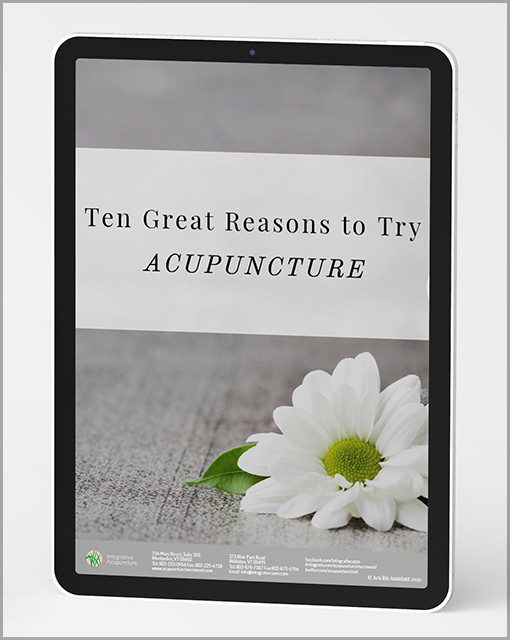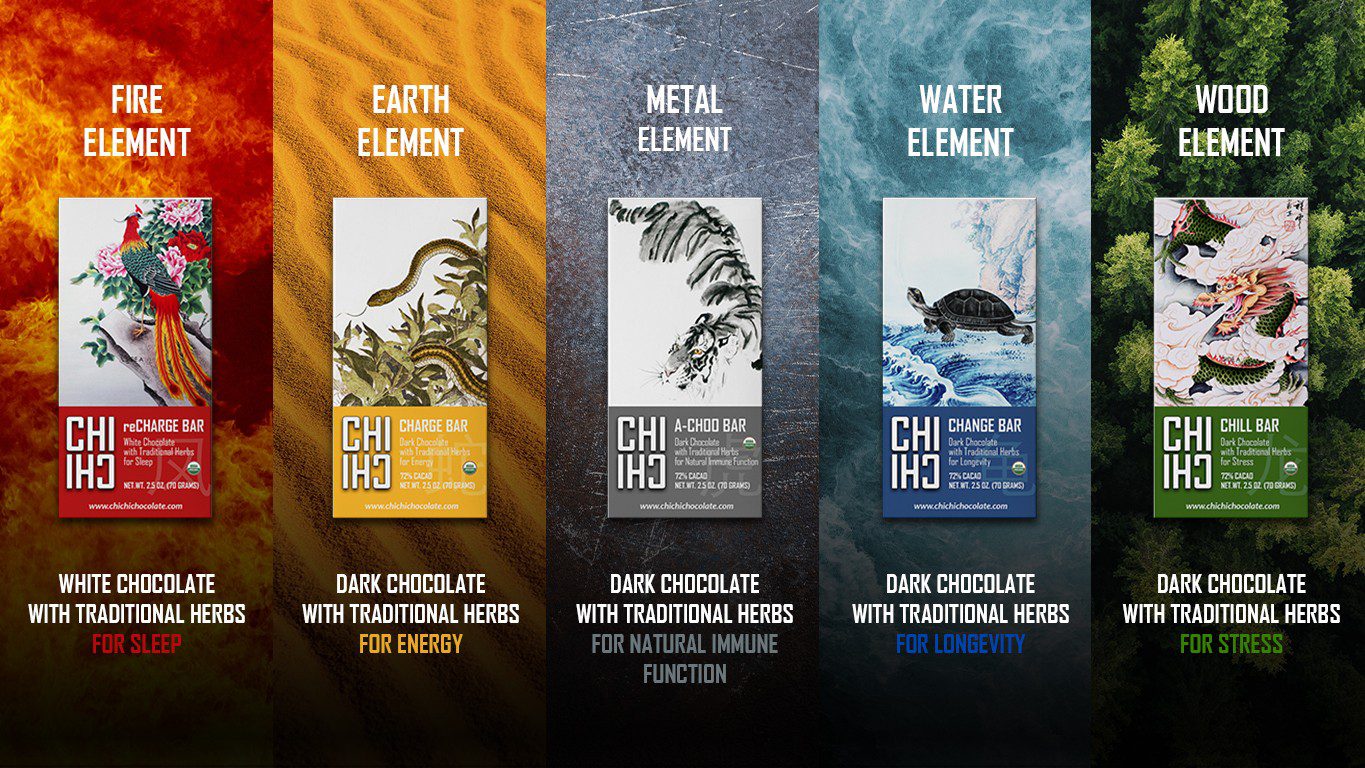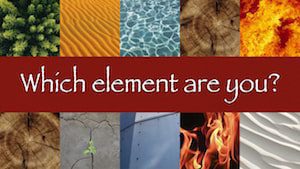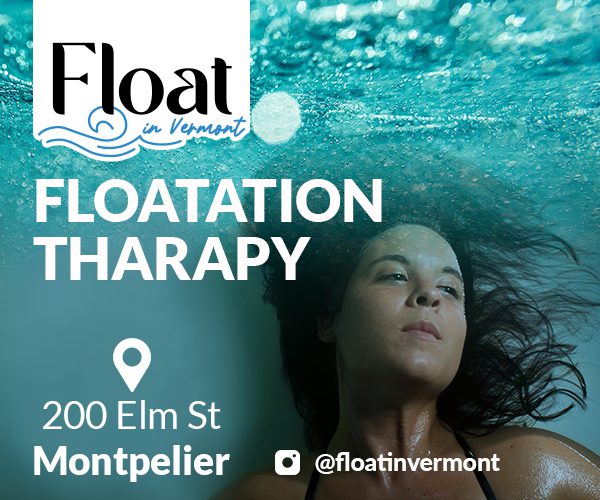Acupuncture is part of Traditional Chinese Medicine. It has been used for over 4,000 years by billions of people. Acupuncture is well known for pain management but it is part of the complete medical system of Traditional Chinese Medicine that treats all medical conditions. We are pleased to offer acupuncture, massage, nutritional therapy, and meditation advice for our patients at our modern and welcoming clinic in Montpelier and Williston, Vermont.
Pain Relief
Acupuncture has been known to completely eliminate pain from various parts of the body in just a few treatments. Finding an experienced acupuncturist with knowledge of all aspects of Chinese medicine, like the providers at Integrative Acupuncture in Montpelier and Williston, allows you a great opportunity to eliminate pain.
Women’s Health
Women’s health spans the categories of fertility, menopause and pregnancy to anxiety, insomnia and headaches. The acupuncturists at both our Montpelier and Williston, VT practice have been treating women with these varying issues for years.
Cancer Care
Cancer care is a regular part of our practice. The practitioners of Integrative Acupuncture have operated a strong acupuncture department at National Life Cancer Treatment Center in Berlin, VT over the past five years. They have gained experience using acupuncture to support patients going through medical care for cancer.
Internal Medicine
Internal medicine treats everything from the lungs and heart to the digestive and neurological systems. Acupuncturists at Integrative Acupuncture use a holistic approach to solve issues with internal medicine.
Nationally Board Certified and Licensed Professionals
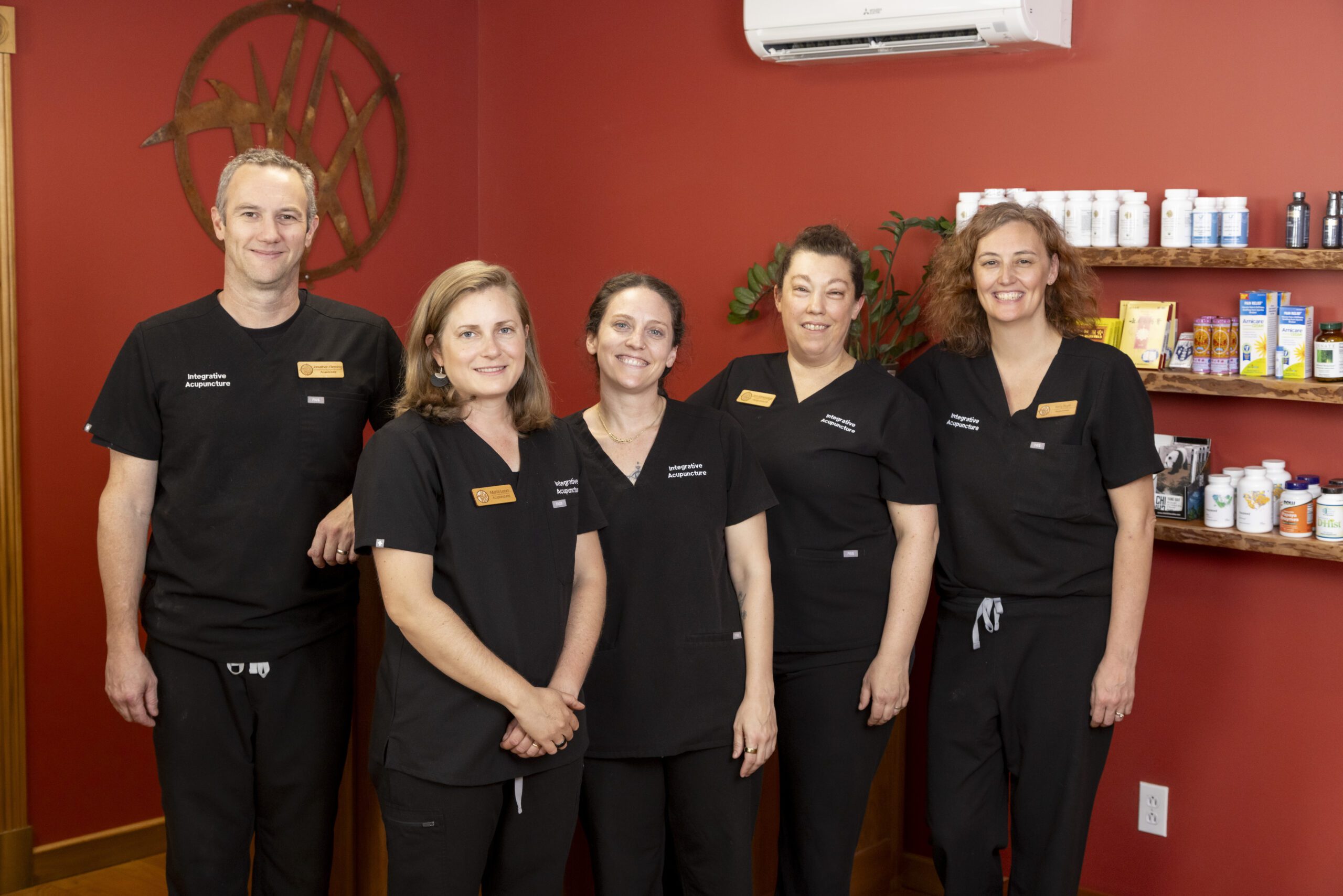
You’re in good hands with the providers at Integrative Acupuncture. Our providers have received their masters degrees in acupuncture from schools ranked in the top ten in the United States.
Licensed Acupuncturists are required to complete a 3,000 hour post graduate program, to pass national board examinations and keep their licenses current with continuing education classes every year. There’s a reason patients choose our office and travel from all over Vermont. We are passionate about this medicine and dedicated to our patients.
Integrating Acupuncture Into Modern Healthcare
Acupuncture has been used in the west for decades but in recent years it is being used in hospitals, recovery centers and spas. The integration of this medicine is taking place due to open minded physicians, dedicated acupuncturists and patients advocating for what works. The providers at IAOM in Montpelier and Williston have contributed to this integration and are committed to continuing it.
We are one of the most experienced practices in Vermont to deal with health care insurance and are in network with many insurers. We donate time to political actions to try to obtain more health insurance coverage for Vermonters to receive acupuncture.
How Does It Work?

Acupuncture is one of the five branches of traditional Chinese medicine, which also includes herbalism, nutrition, massage and meditation. It is originally from China and has a history of use for over 4,000 years. Acupuncture needles are extremely thin stainless steel, about the diameter of a few strands of hair. An insertion guide tube is commonly used to assist in quick and painless insertion.
Needles are never reused at IAOM. A sensation is often felt once the needle reaches to the level of the body’s energy or “qi”. The number and placement of needles varies depending upon the condition and the person; they might be placed in the knee even though it is back pain that is the patient’s complaint. Needles generally remain in place for a period of 15-45 minutes, again dependent on the person and condition.
A sense of relaxation can be expected after an acupuncture treatment. Rather than taking a symptomatic approach to illness, traditional Chinese medicine treats underlying imbalances by stimulating the body’s own natural healing ability.
Western science posits that there are three main mechanisms for acupuncture’s effects:
- Activation of the body’s natural opioid systems: Research has found that several types of opioids may be naturally released from your brain into the central nervous system during acupuncture treatment, thereby reducing pain. No medications or drugs are used on the needles.
- Changes in brain chemistry, sensation, and involuntary body functions: Studies have shown that acupuncture may alter brain chemistry by changing the release of neurotransmitters and neurohormones. Acupuncture also has been documented to affect the parts of the central nervous system related to sensation and involuntary body functions, such as immune reactions and processes whereby a person’s blood pressure, blood flow and body temperature are regulated.
- Changes in blood flow: Acupuncture alters the circulation of blood to the affected area, resulting in removal of pain causing chemicals, reducing swelling and restoring normal function to the area being treated.

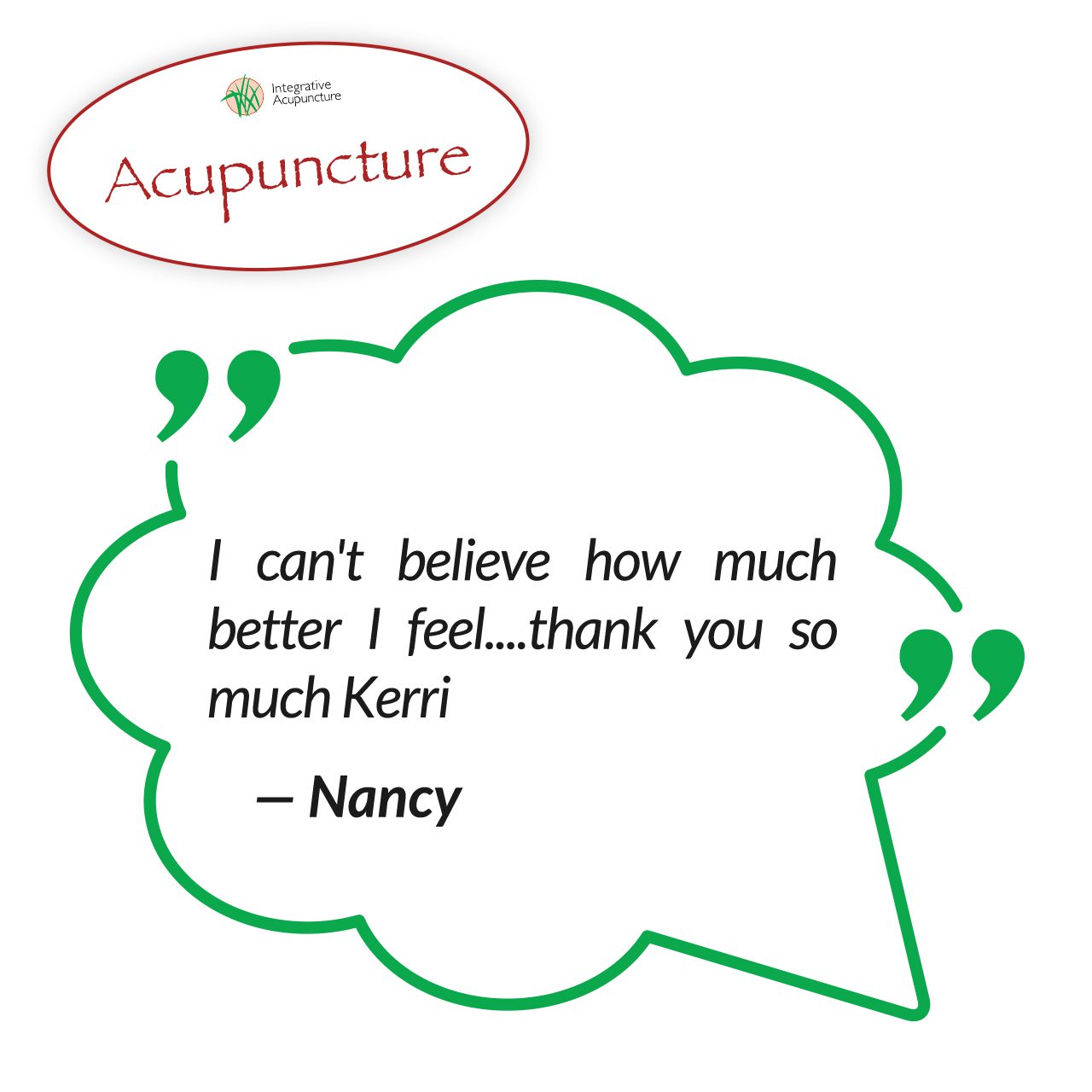
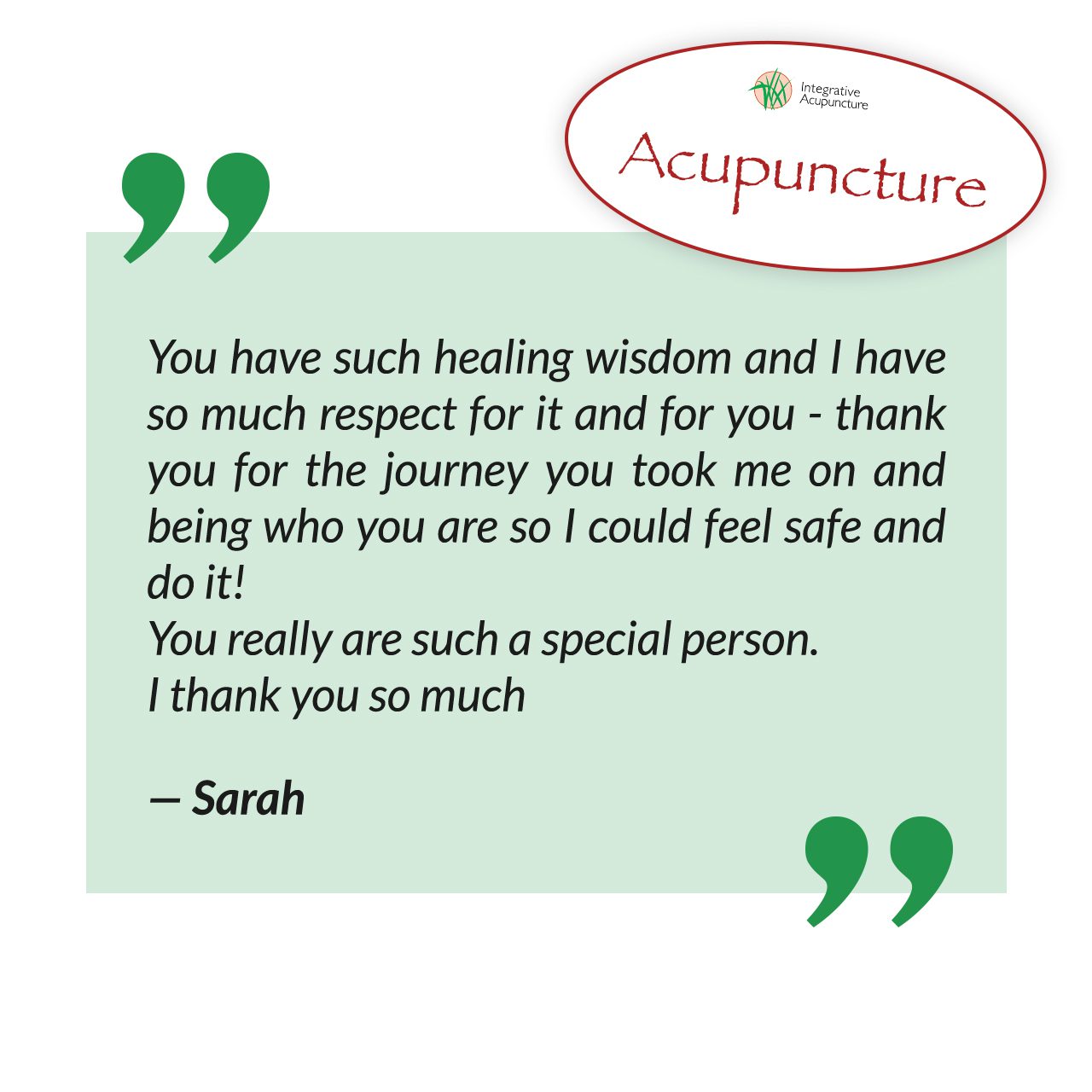
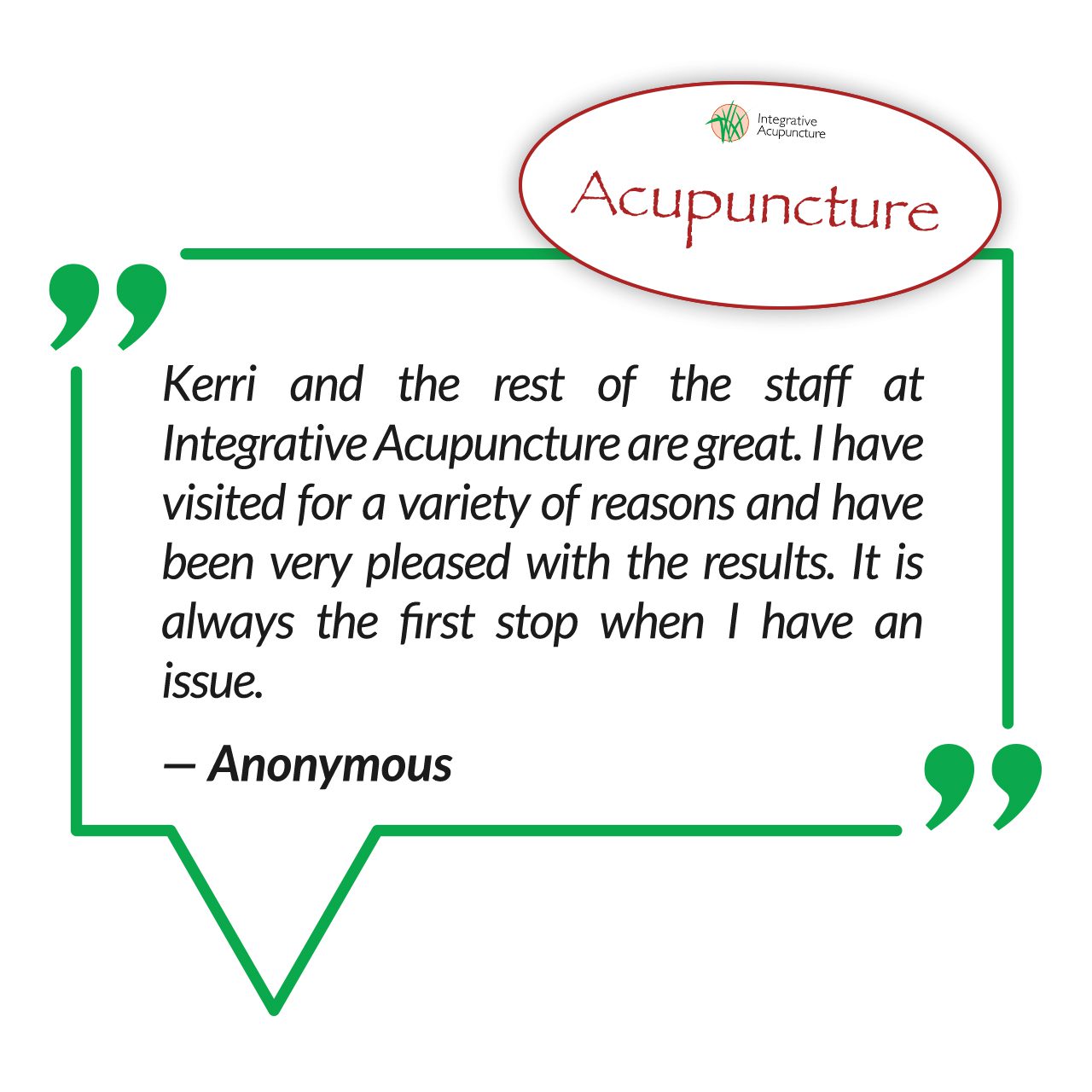
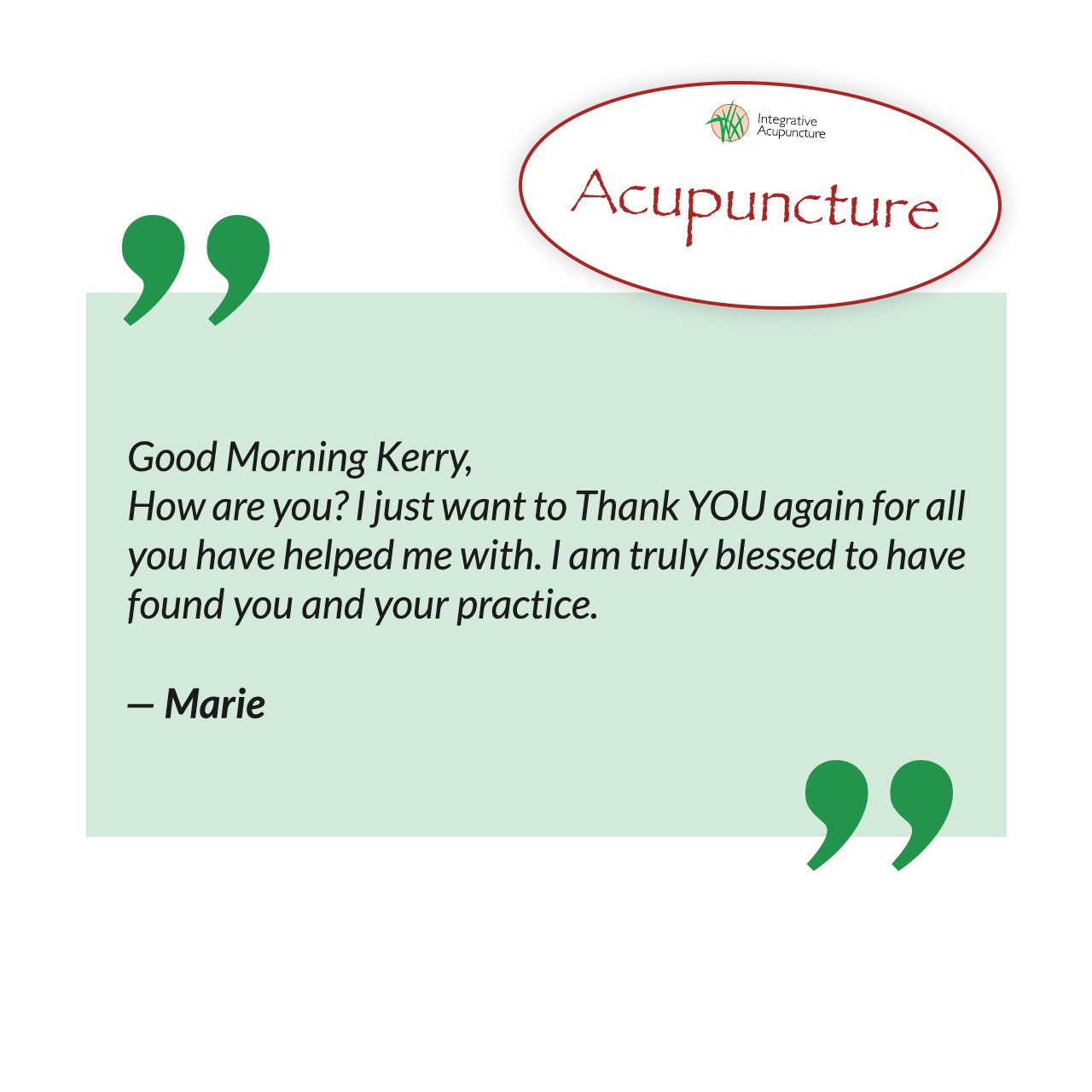
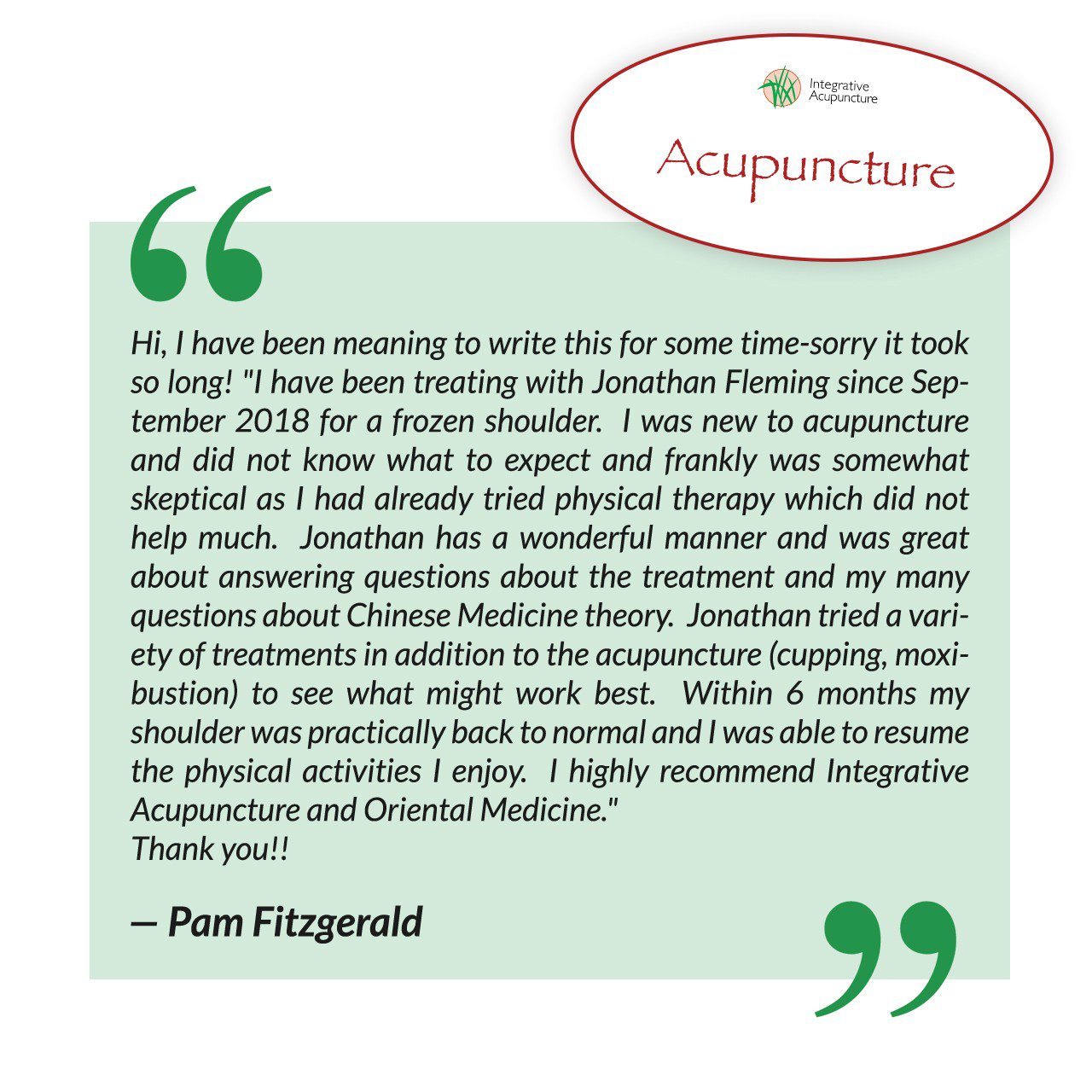
What Does Acupuncture Treat?

Acupuncture is recognized by the National Institutes of Health (NIH) and the World Health Organization (WHO) to be effective in the treatment of a wide variety of medical problems. The following are some of the more common conditions treatable by Chinese Medicine and Acupuncture, as outlined by the WHO:
Low back pain, neck pain, sciatica, tennis elbow, knee pain, periarthritis of the shoulder, sprains, facial pain (including craniomandibular disorders), headache, dental pain, tempromandibular (TMJ) dysfunction, rheumatoid arthritis, induction of labor, correction of malposition of fetus (breech presentation), morning sickness, nausea and vomiting, postoperative pain, stroke, essential hypertension, primary hypotension, renal colic, leucopenia, adverse reactions to radiation or chemotherapy, allergic rhinitis, including hay fever, biliary colic, depression (including depressive neurosis and depression following stroke), acute bacillary dysentery, primary dysmenorrhea, acute epigastralgia, peptic ulcer, acute and chronic gastritis.
Is Acupuncture Safe?

Acupuncturists are required by law to use disposable, one-time-use sterilized needles. Because blood loss and bleeding are minimal with acupuncture, there has been no attempt to require acupuncturists to wear gloves. It is quite reassuring to review the medical literature and not find one documented case where an acupuncturist has transmitted a “personal” infectious disease to a patient or vice versa.
Does Acupuncture Hurt?
There is a sensation when the acupuncture needle is inserted, which most people do not describe as painful. The gauge of the acupuncture needle is 3 times smaller then a hypodermic needle, used for most blood draws. Children have been known to not even notice when an acupuncture needle is inserted. Patients often relax during their acupuncture treatment, many even fall asleep.

How Deep Does an Acupuncture Needle Go?
The depth of insertion as well as the angle of insertion, varies depending upon the location of the acupuncture point and the patient’s body size. Needle depth may be as shallow as 1/16 of an inch to several inches.
How Many Needles Are Used?
The number of needles varies depending upon condition being treated; we estimate the use of 10 needles per treatment.
How Many Acupuncture Treatments Will I Need?
The number of treatments required and the frequency of treatments will vary depending upon your condition and your overall health. Your practitioner can best assess this question after your first appointment. Acupuncture has an accumulative effect, often results are improved for a longer time after each session. A typical series of treatments may be 6 treatments administered once per week, with follow up visits once every two weeks for 1-2 months.

